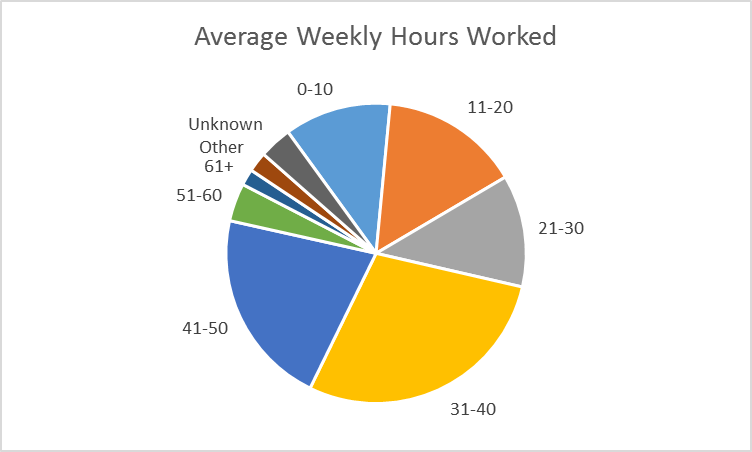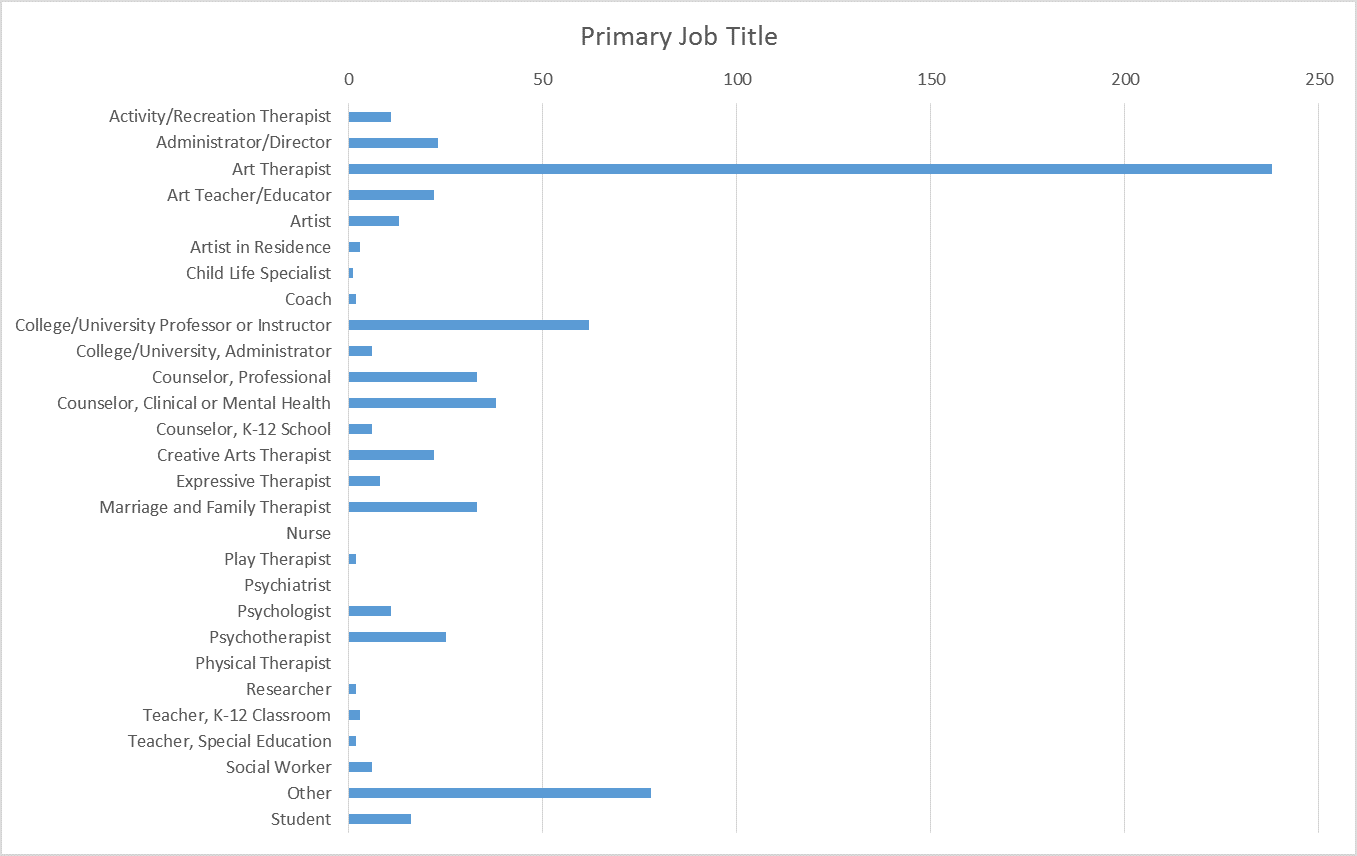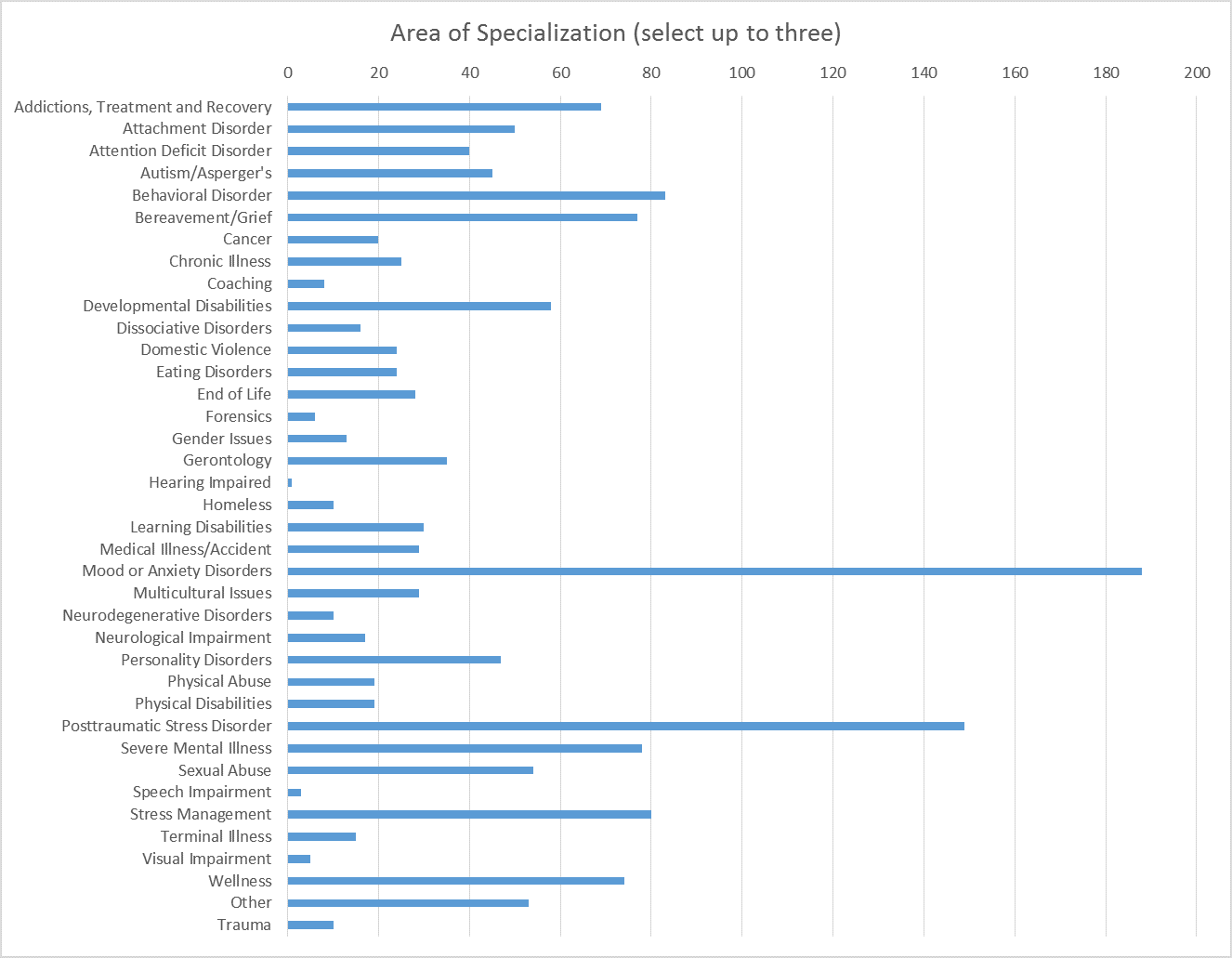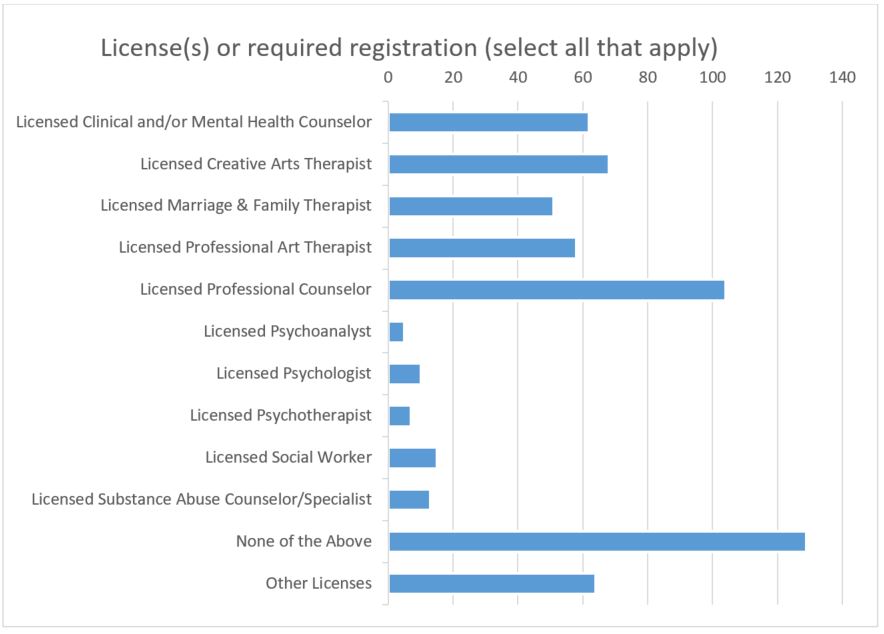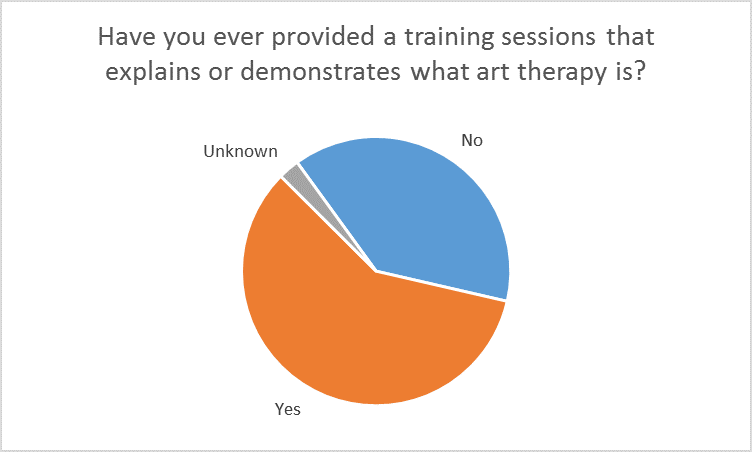December 12, 2018 | By David E. Elkins and Sarah Deaver, PhD, ATR-BC, HLM
The American Art Therapy Association conducted its most recent membership survey in September, 2016 in order to collect membership demographics and other aspects pertinent to the art therapy field. This brief report is intended to provide an updated and concise commentary on the results, prior to the membership survey planned for 2019. In September 2016, AATA members were contacted via direct email regarding the membership survey. Announcements regarding the survey were also created and published online for the association membership. The survey was open for 6 weeks and closed in November of the same year. The below data represent a concise presentation of the 513 responses obtained from this survey. Data collected during the previous survey (i.e., 2013) are presented for demographic data.
Respondents represented 43 of the United States plus the District of Columbia. Additionally, members from Australia, Canada, Cyprus, Germany, Japan, Luxembourg, Panama, Southeast Asia, Sweden, Taiwan, and Trinidad & Tobago participated. Data are presented below in both tabular as well as graphical form.
As can be seen in Table 1, the vast majority of respondents were white (87.9%) females (93.0%) with a Master’s degree (72.3%). Respondents were somewhat evenly distributed in regard to age up to age 70 and above. Over half (56.9%) of all respondents were Credentialed Professionals whereas slightly less than half (44.8%) reported not being a member of another professional association. Nearly one third of respondents (29.6%) have been employed in the art therapy field for 4 years or less and a nearly equal number of respondents (28.7%) work an average of 31-40 hours per week. Similarly, slightly more than one quarter of respondents each reported salary ranges from $30,000-$49,999 (28.8%) as well as $50,000-$79,999 (26.3%).
The primary job title of “Art Therapist” was reported by over one-third (35.7%) of respondents. Regarding work settings, 10.0% of respondents chose “Independent Practice/Office” and 9.3% selected “College/University.” “Other, “Education,” and “Outpatient Mental Health Clinic” were also selected by greater than 7% of the respondents. The top two areas of specialization were “Mood/Anxiety Disorders” (12.2%) and “Posttraumatic Stress Disorder” (9.7%). Over one-fifth (22.0%) of all respondents report not having any additional required licenses/registrations while 17.7% reported “Licensed Professional Counselor” credentials. Lastly, over half (58.9%) of respondents stated that they had provided training sessions for the public or other mental health professionals that explained or demonstrated what art therapy is.
A new membership survey will be conducted during 2019 and will update the member details to a more current perspective. The data presented above will be further analyzed when compared to the data obtained in 2019. However, the data above allow the most recent view of AATA members and a generalized view of the art therapy field.




